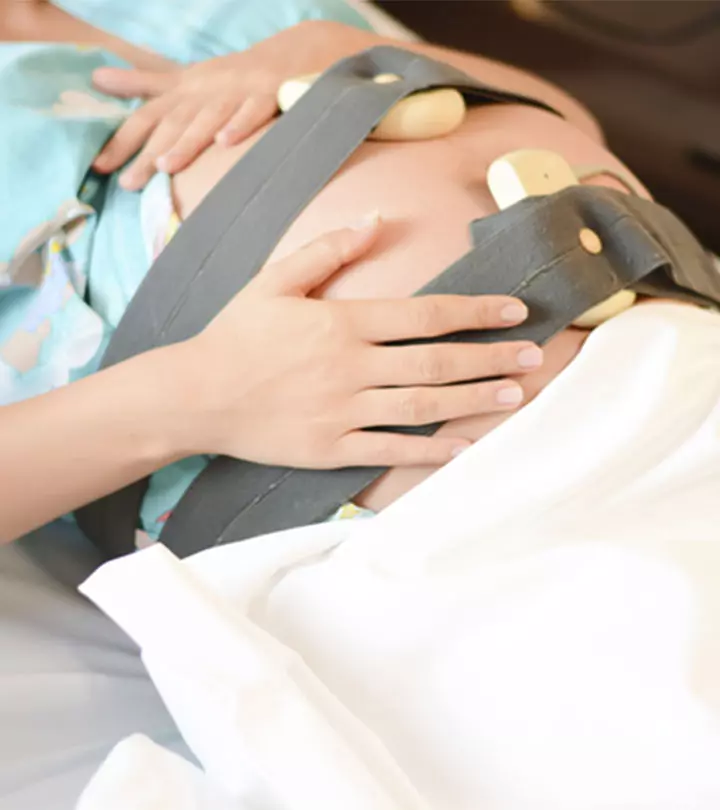

Image: iStock
Today’s birthing practices around the world vary from what they were thousands of years ago. Birthing at hospitals with the help of medical staff is a much modern thing. But in the past, it involved midwives and women with experience. Labor management is quite medically driven now with a need for surgical intervention at times. But back then, the process of birthing was considered to be quite a biological process that would occur either at home or a dedicated birthing house. But this apart quite a few of the practices will amuse and confuse you at the same time:

1: Bloodletting
Bloodletting is drawing of blood to cure an ailment and has been practiced for two millennia. Some ways included an application of leeches and venesection or a cut in a large vein for bloodletting. It was regarded as a preventive measure against inflammation, convulsions, and hemorrhage in pregnant women. Also, most physicians believed that puerperal fever or childbed fever could also be curbed by bloodletting pregnant women. However, considering the contagious nature of the fever, doctors began to look for other means of treatment.
2: Lying Down
The practice of lying down for birthing or the supine position has become the norm because this was the position that the physicians and their medical crew were demanding women to assume. Until birthing did not move under the wings of hospitals, women would assume any position that was comfortable to them and would also help them to move about freely during labor, or help their bodies against gravity during birthing. This was the way baby would pass out of the pelvis with ease. But a surgeon named Jacques Guillemeau thought in 1598 that women’s movements and freedom to assume their position acted as a barrier for any medical intervention that might be needed. Therefore, the reclining position became the norm with the ease of employing obstetric devices and medical practices over centuries.
3: Immobility due to heavy medication
In recent times, being mobile during labor has received support, but in the times when women were heavily drugged, they were not able to position their legs upwards thereby calling for stirrups in the delivery room. Even now, most women birth while being in the halfway reclined posture. However, the reclining position could restrict the opening of the pelvis, and also diminishes the movement of sacrum and coccyx bone. Also, the mother has to work against gravity, in the process, she might compress the artery that flows blood to her baby and the uterus.
4: Enemas
An enema is still widely practiced even at hospitals. The procedure involves applying steam through the rectum. It gained popularity with physicians coming to believe that childbed fever could be prevented by clearing a woman’s bowel before she went into labor.
5: Perennial Shaves
Perrenial shaves were meant for women from lower classes who were believed to harbor more germs. The process would involve shaving around the perineum, vulva, and the anus. It would also make it easier for doctors should there be a need for an episiotomy.
6. The Douches And Cleansing
Using saline solutions apart from bichloride of mercury or whiskey for vaginal douches during labor were meant to prevent any infections. This apart, ether, kerosene and ammonia solution were also used to wash women’s heads. Stomach and nipples would be washed with ether.
7: Episiotomy
Fielding Ould first laid out the instruction for episiotomies in 1792 and recommended the procedure to be applied only in case of an emergency. The procedure became popular after 1920s when a professor of obstetrics, Joseph DeLee published a paper recommending the use of episiotomy and forceps as the standard procedure because he believed that labor was damaging to both the baby and its mother and that episiotomy could reduce the risk of any damage to the fetal brain and help restore a woman’s vagina. But evidence from continued application proves the contrary.
8: Manual Placental Birthing
It was a common practice in the 18th century to manually extract the placenta because it was believed that the cervix would begin to close immediately after the baby was born, and thereby trap the placenta inside the uterus. The practice had the midwives getting hold of the umbilical cord with one hand and using the other hand to bring out the placenta from the uterus, which would then be manually peeled away if it hasn’t sheered away naturally. As if this was not enough, the mother would be instructed to push or induce herself to vomit as the action would help push out the placenta.
9. Twilight Sleep
The most popular pain-relieving agent in the 1900s was Twilight Sleep composed of morphine and scopolamine. While morphine was believed to relieve pain, scopolamine would cause amnesia in a way that women would wake with no memory labor or pain. But in reality, morphine didn’t suppress the labor pain. Also, scopolamine caused women to become psychotic while they would simply not be aware of what was going on. So women would scream because they felt the pain, but they wouldn’t know why. Moreover, they would be thrashing around desperately on their beds and succumb to injuries. Therefore, they were bound in padded beds called labor cribs. The ugly side was that they were left on their own to feces and urine, with no help or person allowed in their vicinity until their babies were born.
10. Ether and chloroform as anesthesia
Pain management was a thing that was in the hands of a skilled midwife or a caregiver. However, the kind of anesthesia used included alcohol, poppy extract, hemp or henbane. In the mid-1800s, especially during the reign of Queen Victoria, the medical forms of anesthesia used were chloroform and ether. While these drugs were a rage among those in high society, they did have their side effects on both the newborn and the mother as they caused breathing difficulties in the newborn and maternal heart failure. It wasn’t just these. There was also an increased use of forceps that would cause scars to the cervix or the newborn.
Community Experiences
Join the conversation and become a part of our nurturing community! Share your stories, experiences, and insights to connect with fellow parents.












